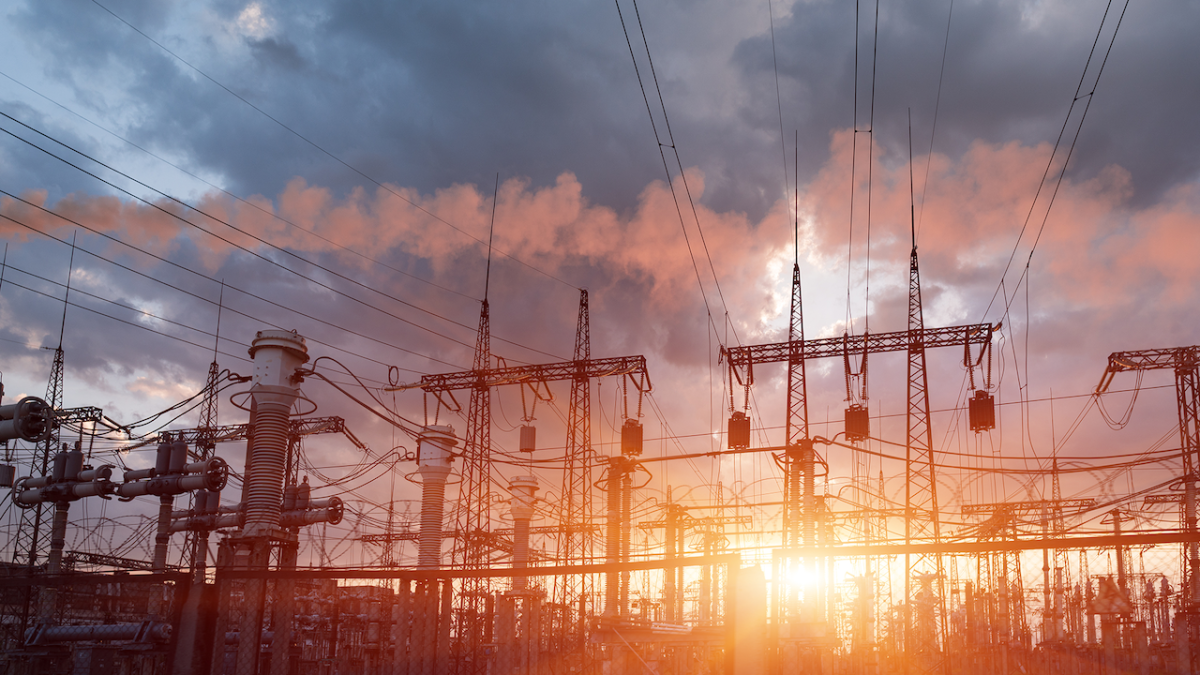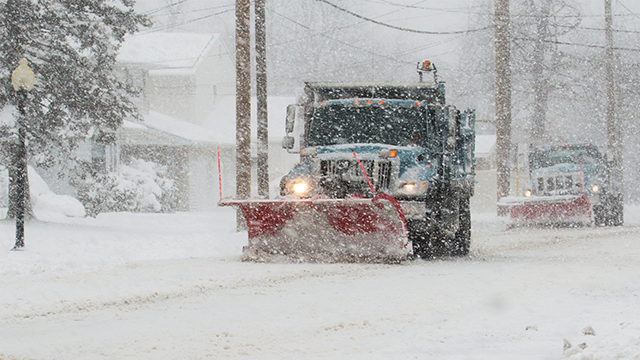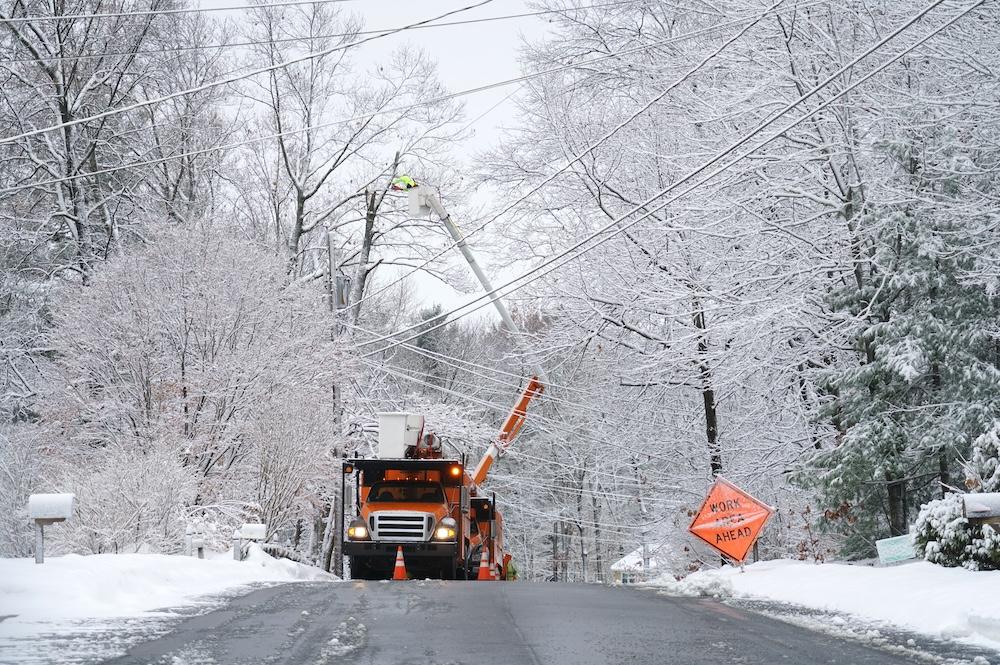Storm Resiliency and Response Checklist for Energy Utilities
Storm Resiliency and Response Checklist for Energy Utilities: Are You Ready?
Floods, hurricanes, tornadoes, earthquakes and wildfires pose dangerous threats to critical infrastructure. In the wake of these natural disasters, the essential nature of the services that energy utilities provide becomes even more obvious. Service outages during extreme weather events threaten public health and safety and disrupt the economy. Without power, families can’t heat their homes amid sub-freezing temperatures. Interruption of the power grid poses a significant threat beyond just financial loss and damage to reputation; the operational integrity of this critical infrastructure is vital to the community, and any disruption could endanger lives.
It keeps energy utilities up at night: a major storm has rolled through, and customers are without service. Systems need to be back up and running again as soon as possible. By adopting a proactive approach, it’s possible to mitigate the risk of service disruptions. Energy utilities should consider the following four steps on the resiliency-bolstering journey: Plan, Prepare, Respond and Recover.
Step 1. Plan
Disasters are cyclical. The main goal of resiliency is to break the cycle so that the impacts of the next disaster are less severe for people and property. Planning and preparation may seem synonymous, but in this context, planning refers to actions taken years if not decades ahead of time. Consider the way we prioritize our personal health and well-being: while visiting an emergency doctor may be necessary on rare occasions, making preventative care visits to a primary physician lowers the risk of unforeseen health crises. Similarly, safeguarding our critical infrastructure requires a proactive approach centered around prevention. In the planning phase, it’s critical for energy utilities to evaluate weather-related risks, identify vulnerable assets and infrastructure, and determine what can be done ahead of time to mitigate these risks.
New Infrastructure: Design for Resiliency
Although retrofits and repairs are unavoidable in some cases, the ideal strategy is to consider storm resiliency at the time of design and construction – going back as far as the site due diligence and land use planning stages. Before embarking on the development of critical infrastructure such as transmission lines or substations, consider the geographical features, elevations, and water levels of the proposed site. For ongoing construction projects, implement strategies to protect assets and equipment. Flood plains and shorelines are shifting, so assets close to waterways should consider a hydrology study and coastal terrain mapping. Energy utilities may also want to consider a long-term approach to undergrounding their power lines in regions prone to weather-related disruptions; underground lines are less vulnerable to storm damage, falling debris and other environmental factors that cause outages.
Existing Infrastructure: Mitigate Impacts
Aging infrastructure tends to be more at-risk; it’s recommended to perform routine inspections and maintenance of rights-of-way. Develop a comprehensive hazard mitigation plan that includes a thorough risk assessment, operational optimizations, disaster procedure development, personnel training, and technology upgrade recommendations. Procure essential replacement parts and equipment ahead of time to avoid supply chain disruption in future emergencies. Analyze organizational effectiveness to assure staff are trained and available at critical times. Frequently test communications networks used to distribute evacuation warnings and other life-saving information. Many areas also have Local Emergency Planning Commissions (LEPCs) available to advise utilities directly on how to make infrastructure and operations more resilient.
Consider Climate Modeling
As weather events increase in severity, climate risk modeling is another modern planning measure that benefits service providers. Engaging a climate trend analysis consultant can provide valuable insights and help you make informed decisions regarding your service area. Predictive analytics reveal when existing infrastructure and physical assets may be at risk in the near and long term. These insights will help determine what, where and when to prioritize climate risk mitigation measures. Climate risk modeling also helps with making a strong business case for system hardening by enabling a cost-benefit analysis of potential preventative investments. Black & Veatch's eBook on climate modeling for utilities explains how to address key factors including location, weather patterns and climate change data.
Case Study: Proactive Texas Utility Protects Customers a Decade After Implementing Winterization Strategies
In February 2021, a powerful storm blanketed Texas with snow and ice. Record low temperatures knocked out power and heat to 4.5 million homes and businesses across the state. More than 200 lives were lost, and property damage amounted to more than $190 billion. New questions arose about confidence in the grid’s resiliency. In the western Texas town of El Paso, the situation was significantly different. Out of El Paso Electric’s 443,000 customers, less than 3,000 lost power during the polar vortex. Why was this city faring better than the rest of the state?
In 2011, El Paso experienced a traumatic storm which, at the time, was the region’s worst weather event in half a century. After life-threatening disruptions to power and water, El Paso Electric decided they would never let this happen to their city again. The utility enlisted Black & Veatch’s expertise and spent 18 months winterizing their generation, transmission, and distribution assets. El Paso Electric set a prime example for other utilities by taking system hardening measures to bolster grid integrity. In the event of the next polar blitz, strategic winterization blueprints could keep utilities and their most vulnerable customers from being left out in the cold. Learn more about this project here.
Step 2. Prepare
The planning phase consists of what an organization does on paper to document physical actions to take. During the preparedness phase, plans are executed to ensure that people, equipment, resources and infrastructure are ready before disaster strikes. Although actions in the preparation phase still are considered preventative measures, the time available to implement them may be more limited than during the planning stage. Regardless of missed planning opportunities, preparation efforts still are more affordable than emergency responses and can optimize outage and recovery timelines.
Focus on Low-Cost, High-Impact Strategies
There are cost-effective, high-impact preparation measures such as deploying sandbags to strategically re-route stormwater in flood-prone areas. Monitor the storm’s progress and adjust the response as necessary. Prepare field crews for potential rapid deployment and extended work hours.
Coordinate with Other Stakeholders
To protect inhabitants of the service area, it’s critical to cooperate with the federal, state and/or local emergency management departments and collaborate to prepare a customized, comprehensive plan. These public safety officials have the authority in all jurisdictions to enforce evacuations, and it’s essential for all stakeholders (including other utilities, law enforcement, transit agencies, and local businesses) to follow their instructions in disaster situations. The emergency management department has planned for the worst-case scenario (such as a downed power line over a major road) and developed redundant evacuation routes to get people out of harm’s way. Make sure personnel are informed on the latest version of this plan. Prepare a procedure on how to communicate real-time hazard updates and outages with customers and other affected stakeholders.
Step 3. Respond
Much like planning and preparation, response and recoverysometimes are seen as interchangeable, but the distinction in this context is important. Response refers to actions taken during and immediately after a natural disaster, while recovery refers to the more long-term efforts to get a community back on its feet. With aging infrastructure plaguing virtually every service provider, the possibility of failure is looming. The planning and preparedness phases are critical for increasing the resilience of these systems, and those pre-disaster phases should inform response and recovery activities when facing the threat of a system failure.
Prioritize the Three Ps: People, Property and Prevention
Response efforts include protecting people, protecting property, and preventing the situation from escalating. Even if the customer has been evacuated from the service area, the hazards aren’t gone. A damage assessment and triage of district assets needs to be completed to identify and immediately address live electrical wires, damaged substations and fallen poles. Damage assessments can be completed by personnel on foot, by vehicle, through remote-enabled technology such as drones, or a combination of these methods. Energy utilities benefit from employing either in-house or external damage assessment professionals that can be mobilized immediately after a natural disaster.
Safely Repair Assets and Restore Services
Restoration of the power grid continues to be important in the response phase. To ensure a complete restoration of operations, deploy crews for repair and replacements as necessary. Conduct adequate testing of repaired equipment and infrastructure before restoring to full operation.
Case Study: Supporting Utilities Through the Biggest Storms of Our Generation
In early 2023, Winter Storm Mara had widespread impacts from Texas to Tennessee – causing more than 150,000 systemwide power outages. A local energy utility hired Bird Electric, a Black & Veatch company, as an outside contractor to augment their ongoing power restoration efforts. The utility historically hadn’t needed to request external contractor support, but the unprecedented scale of these outages and post-storm conditions of ice and fallen trees called for special expertise. Bird Electric provided essential equipment and placed more than 1,000 full-time employees in the field. Coordinating a vast number of outside resources resulted in various logistical challenges, but Bird Electric was able to expedite crew onboarding and resource allocation – enabling safe and timely restoration of power for the affected community.
Step 4. Recover
Recovery encompasses long-term and future-focused efforts to restore damaged grid infrastructure and get the community back to “business as usual.” These recovery efforts could take months, years or even decades depending on the severity of the disaster and the region’s level of resiliency. Mitigation activities should be considered while conducting recovery efforts, to increase resiliency and ensure that future disasters do not repeat the same damage to infrastructure.
Leverage Applicable Funding
If an organization is eligible, the recovery phase presents an opportunity when federal funding may become of greater interest. The Infrastructure Investment and Jobs Act (IIJA) provides funding for new and existing programs related to storm resiliency and response. Even with billions of dollars on the table, it can be challenging for energy utilities to navigate the funding available for recovery efforts and the complex requirements. Consider working with an expert consultant partner that specializes in getting the most out of federal grant dollars.
Return to Step 1: Continuous Improvement to Break the Cycle of Devastation
The recovery phase builds upon all the previous steps: planning from years prior, preparation from just before the storm, and damages remaining after the initial response. Although recovery is the “final” step in this context, this is actually where the resiliency journey makes a full circle back to the planning phase. Reflecting on lessons learned and continuously improving the resiliency plan is essential to prevent history from repeating itself.
Next Steps: Collaborate with an Expert Advisory Partner to Guide Your Resiliency Journey
Storm-related dangers are only increasing in severity. Half of all U.S. states will be in the top 5% most at-risk locations in the world by 2050. Many grid systems are built upon aging infrastructure and are at risk of catastrophic failure. Many energy utilities haven’t been able to make upgrades due to complicated funding qualifications or uncertainty about the best path forward. Fortunately, expert advisory partners are available to help utilities navigate all the complexities of developing a robust and comprehensive storm resiliency strategy.
At the end of the day, the core mission is to ensure uninterrupted power for customers, regardless of the challenges posed by nature. Although all four of these steps -- plan, prepare, respond and recover -- are important, planning cultivates the biggest opportunity to mitigate risk and bolster resiliency. Mapping out resilience before critical infrastructure is even built is ideal. Collaborating with a design-build expert that offers a full suite of engineering, construction, management, funding advisory, and storm readiness services can provide numerous advantages for both new and existing assets. By partnering with a company that offers all these capabilities in-house, providers can benefit from a streamlined process that ensures continuity and consistency throughout the project lifecycle. This approach can help to optimize project outcomes, reduce delays and budget overruns, and ensure that assets are well-equipped to withstand natural disasters and other disruptive events.





